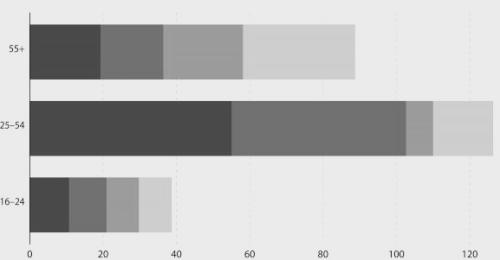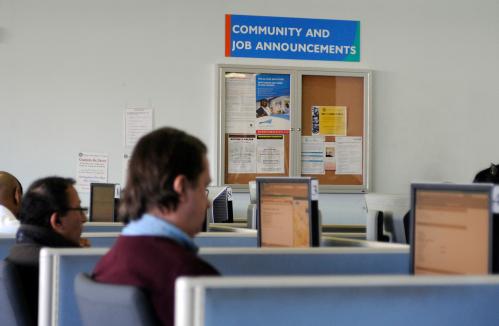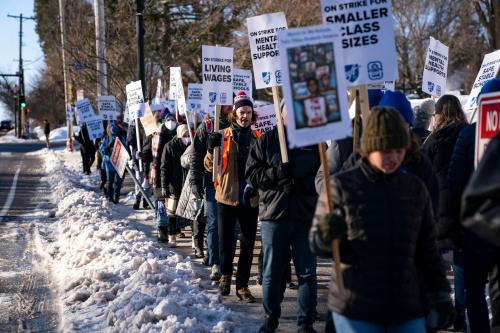The proportion of U.S. adults in paid work has declined in recent decades. While the fall in male employment gets the most attention, female work rates are declining too. A new NBER paper from Katharine Abraham and Melissa Kearney provides a comprehensive review and rigorous analysis of the overall trends, and potential contributory factors including trade, technology, weak demand, and an aging population to name a few
Abraham and Kearney suggest that other factors are likely playing a role, too, which are impossible to quantify. These include changes in the social norms around paid work and “improvements in leisure technology” (read: Rainbow Six Siege and other awesome games). Note that their preferred measure of labor market activity is the employment-to-population ratio (see Eleanor Krause and Isabel Sawhill’s guide for a quick explanation of the different employment metrics).
The Abraham and Kearney paper is a gold mine, and an important contribution to a vital debate. But one sentence in particular jumped out to us: “The decline for men age 25 to 34 (5.6 percentage points) was more than twice as large as the decline for women the same age (2.3 percentage points); among those age 35 to 44 and those age 45 to 54, the declines for men and women were more similar.”
For all the worries about middle-aged men, it is actually men at the younger end of the prime-age years who have seen the sharpest drop in employment rates:
These are not older men who have been dislocated from traditional manufacturing jobs after years of service. They are younger men who seem to be struggling to connect to the labor market at all. Perhaps these men are poorly educated? We know, after all, that women have overtaken men in educational attainment. While both men and women aged 25-34 in 2016 were more educated than in 1999, the educational improvement has been faster for women:
The negative impact of low levels of education on work rates is significant – and essentially the same for men and women. The employment rate among young adult women with just a high school diploma has dropped by 8.9 percentage points. For men of the same age group, the fall is 9.6 percentage points. Since there are more men with less education, this explains some of the gender difference in employment rate changes.
But it is actually among the better educated that the gender gap emerges. Among those aged 25-34 with a college degree, the male employment rate has dropped twice that of women:
Perhaps these men are more likely to be impacted by some of the factors discussed by Abraham and Kearney. Perhaps their specific educational credentials did not fit well with the needs of the labor market. Perhaps more of them are stay-at-home dads. We do know that at least some of them are living with their parents, and so may be under less pressure to find paid work. As Aguiar et al. (2017) report, two out of three non-employed young men ages 21 to 30 lived with a parent or close relative in 2015, compared to fewer than half in 2000. Perhaps the relative attraction of the labor market compared to video gaming is less for men than for women.
Our interest in this particular, small slice of the population – young men with some college education – should not distract from the broader findings of the paper: that large economic forces, especially trade, technology, and broad demographic shifts including an aging population are behind much of the fall in employment. For both men and women, a post-secondary education is increasingly a requirement in the modern labor market.
But the sizable drop in employment rates among younger men (25 to 34) should also give us pause, perhaps especially the drop among those who have been to college, but have not successfully made the transition from learning to earning.
The Brookings Institution is committed to quality, independence, and impact.
We are supported by a diverse array of funders. In line with our values and policies, each Brookings publication represents the sole views of its author(s).








Commentary
Why are young, educated men working less?
February 23, 2018